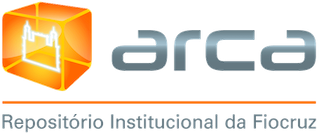Please use this identifier to cite or link to this item:
Type
ArticleCopyright
Open access
Sustainable Development Goals
03 Saúde e Bem-Estar09 Indústria, inovação e infraestrutura
17 Parcerias e meios de implementação
Collections
- IOC - Artigos de Periódicos [12988]
Metadata
Show full item record
CO-IMMUNIZATION WITH SPIKE AND NUCLEOCAPSID BASED DNA VACCINES FOR LONG-TERM PROTECTIVE IMMUNITY AGAINST SARS-COV-2 OMICRON
Author
Pinto, Paolla Beatriz de Almeida
Timis, Julia
Chuensirikulchai, Kantinan
Qin, Hui Li
Hsueh, Han Lu
Maule, Erin
Nguyen, Michael
Alves, Rúbens Prince dos Santos
Sosa Batiz, Fernanda Ana
Valentine, Kristen
Landeras Bueno, Sara
Kim, Kenneth
Hastie, Kathryn
Saphire, Erica Ollmann
Alves, Ada Maria de Barcelos
Ngono, Annie Elong
Shresta, Sujan
Timis, Julia
Chuensirikulchai, Kantinan
Qin, Hui Li
Hsueh, Han Lu
Maule, Erin
Nguyen, Michael
Alves, Rúbens Prince dos Santos
Sosa Batiz, Fernanda Ana
Valentine, Kristen
Landeras Bueno, Sara
Kim, Kenneth
Hastie, Kathryn
Saphire, Erica Ollmann
Alves, Ada Maria de Barcelos
Ngono, Annie Elong
Shresta, Sujan
Affilliation
La Jolla Institute for Immunology. Center for Vaccine Innovation. San Diego, CA, USA / Fundação Oswaldo Cruz. Instituto Oswaldo Cruz. Laboratório de Biotecnologia e Fisiologia de Infecções Virais. Rio de Janeiro, RJ, Brasil.
La Jolla Institute for Immunology. Center for Vaccine Innovation. San Diego, CA, USA.
Chiang Mai University. Faculty of Medicine. Department of Microbiology. Chiang Mai, Thailand / La Jolla Institute for Immunology. Center for Vaccine Innovation. San Diego, CA, USA.
La Jolla Institute for Immunology. Center for Vaccine Innovation. San Diego, CA, USA.
La Jolla Institute for Immunology. Center for Vaccine Innovation. San Diego, CA, USA.
La Jolla Institute for Immunology. Center for Vaccine Innovation. San Diego, CA, USA.
La Jolla Institute for Immunology. Center for Vaccine Innovation. San Diego, CA, USA.
La Jolla Institute for Immunology. Center for Vaccine Innovation. San Diego, CA, USA.
La Jolla Institute for Immunology. Center for Vaccine Innovation. San Diego, CA, USA.
La Jolla Institute for Immunology. Center for Vaccine Innovation. San Diego, CA, USA.
La Jolla Institute for Immunology. Center for Vaccine Innovation. San Diego, CA, USA.
University Cardenal Herrera. Valencia, Spain / La Jolla Institute for Immunology. Center for Vaccine Innovation. San Diego, CA, USA.
La Jolla Institute for Immunology. Center for Vaccine Innovation. San Diego, CA, USA / La Jolla Institute for Immunology. Microscopy and Histology Core Facility. San Diego, CA, USA.
La Jolla Institute for Immunology. Center for Vaccine Innovation. San Diego, CA, USA.
La Jolla Institute for Immunology. Center for Vaccine Innovation. San Diego, CA, USA / University of California San Diego. Division of Infectious Diseases and Global Public Health. Department of Medicine. San Diego, CA, USA.
Fundação Oswaldo Cruz. Instituto Oswaldo Cruz. Laboratório de Biotecnologia e Fisiologia de Infecções Virais. Rio de Janeiro, RJ, Brasil.
La Jolla Institute for Immunology. Center for Vaccine Innovation. San Diego, CA, USA.
La Jolla Institute for Immunology. Center for Vaccine Innovation. San Diego, CA, USA / University of California San Diego. Division of Host-Microbe Systems and Therapeutics. Department of Pediatrics. San Diego, CA, USA.
La Jolla Institute for Immunology. Center for Vaccine Innovation. San Diego, CA, USA.
Chiang Mai University. Faculty of Medicine. Department of Microbiology. Chiang Mai, Thailand / La Jolla Institute for Immunology. Center for Vaccine Innovation. San Diego, CA, USA.
La Jolla Institute for Immunology. Center for Vaccine Innovation. San Diego, CA, USA.
La Jolla Institute for Immunology. Center for Vaccine Innovation. San Diego, CA, USA.
La Jolla Institute for Immunology. Center for Vaccine Innovation. San Diego, CA, USA.
La Jolla Institute for Immunology. Center for Vaccine Innovation. San Diego, CA, USA.
La Jolla Institute for Immunology. Center for Vaccine Innovation. San Diego, CA, USA.
La Jolla Institute for Immunology. Center for Vaccine Innovation. San Diego, CA, USA.
La Jolla Institute for Immunology. Center for Vaccine Innovation. San Diego, CA, USA.
La Jolla Institute for Immunology. Center for Vaccine Innovation. San Diego, CA, USA.
University Cardenal Herrera. Valencia, Spain / La Jolla Institute for Immunology. Center for Vaccine Innovation. San Diego, CA, USA.
La Jolla Institute for Immunology. Center for Vaccine Innovation. San Diego, CA, USA / La Jolla Institute for Immunology. Microscopy and Histology Core Facility. San Diego, CA, USA.
La Jolla Institute for Immunology. Center for Vaccine Innovation. San Diego, CA, USA.
La Jolla Institute for Immunology. Center for Vaccine Innovation. San Diego, CA, USA / University of California San Diego. Division of Infectious Diseases and Global Public Health. Department of Medicine. San Diego, CA, USA.
Fundação Oswaldo Cruz. Instituto Oswaldo Cruz. Laboratório de Biotecnologia e Fisiologia de Infecções Virais. Rio de Janeiro, RJ, Brasil.
La Jolla Institute for Immunology. Center for Vaccine Innovation. San Diego, CA, USA.
La Jolla Institute for Immunology. Center for Vaccine Innovation. San Diego, CA, USA / University of California San Diego. Division of Host-Microbe Systems and Therapeutics. Department of Pediatrics. San Diego, CA, USA.
Abstract
The continuing evolution of SARS-CoV-2 variants challenges the durability of existing spike (S)-based COVID-19 vaccines. We hypothesized that vaccines composed of both S and nucleocapsid (N) antigens would increase the durability of protection by strengthening and broadening cellular immunity compared with S-based vaccines. To test this, we examined the immunogenicity and efficacy of wild-type SARS-CoV-2 S- and N-based DNA vaccines administered individually or together to K18-hACE2 mice. S, N, and S + N vaccines all elicited polyfunctional CD4⁺ and CD8⁺ T cell responses and provided short-term cross-protection against Beta and Omicron BA.2 variants, but only co-immunization with S + N vaccines provided long-term protection against Omicron BA.2. Depletion of CD4⁺ and CD8⁺ T cells reduced the long-term efficacy, demonstrating a crucial role for T cells in the durability of protection. These findings underscore the potential to enhance long-lived protection against SARS-CoV-2 variants by combining S and N antigens in next-generation COVID-19 vaccines.



Share